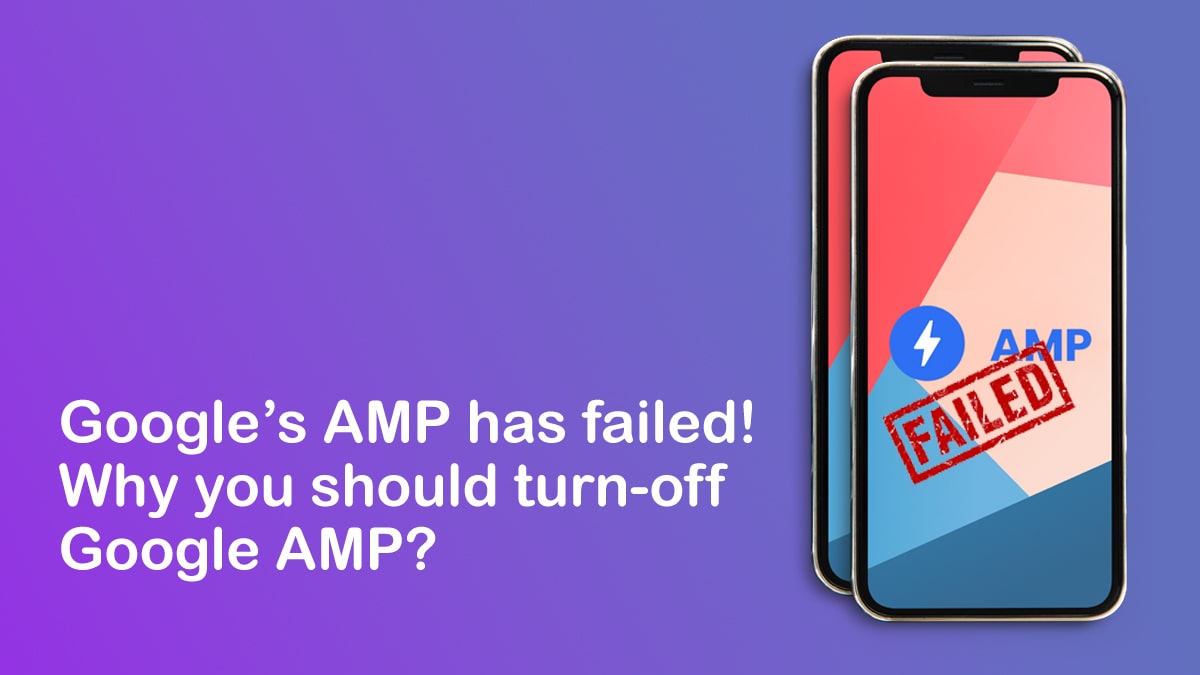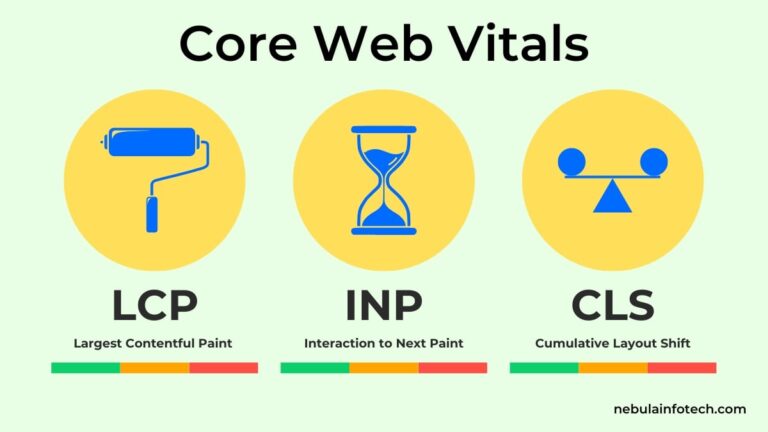Back in 2015, Google launched open-source AMP support for the website which made the content of a web page light and faster to load. Every other website was adopting AMP technology in their websites.
Fast forward to 2021, Google’s AMP has failed and websites are now switching back from AMP Pages to normal HTML Pages. Moreover, Google in a statement has already said that they will not make AMP mandatory for ranking on the keywords.
Now, websites are also observing that the AMP pages are taking a toll when it comes to traffic. There has been a massive drop in web traffic in the past few months which suggests that it is smart to move back to traditional mobile-friendly web pages.
Kinsta in their case study observed that their mobile leads dropped by 59% due to AMP. They implemented AMP on their website for two months for testing and found out that from a business perspective AMP is not good.
The only benefit that AMP Pages offers is the page loading speed, but, if you follow some steps then you can beat AMP pages in speed as well. So, there are not a lot of reasons why one should adopt AMP Pages.
Here are some more reasons why you should turn off Google’s AMP on your website. But first, let’s find out what AMP is.
What is AMP?
Accelerated Mobile Pages (AMP) is an open-source HTML-based framework created by Google to provide instant website delivery.
With the mobile-first approach for the internet, Google along with other publishers wanted to have a technology sing which the delivery of the content over the internet becomes fast.
The solution to this was to start AMP Project, which offers a framework using which website owners can increase their content delivery.
The reason why AMP pages are faster is because of the limited use of HTML, CSS, and Javascript. AMP can significantly reduce the loading speed but it compromises the look and feel of the website.
What Are the Pros and Cons of AMP?
To better understand AMP, we should look at the pros and cons of AMP and how well it aligns itself with the goal of a website. so, here are the pros and cons of AMP projects-
Pros
- Website Loading Speed- AMP helps website in delivering faster content by removing non-essential elements
- Higher Rankings- AMP has made websites fast which is a Google’s Ranking factor
- WordPress implementation- Using a WordPress website you can implement AMP faster on your website
Cons
- Hard to implement for Non-Wordpress website- It is hard for a non-wordpress website to implement the AMP. You would have to code from scratch to implement AMP.
- Reduced ad Revenue- AMP affects ad revenue significantly by showing less ads to enable the website to load fast
- Limit Website capabilities- AMP limits the capabilities of a website with limited analytics, lead capturing and social sharing which significantly impacts the business performance
Why you should turn off Google AMP?
Below, are 4 reasons why you should turn off Google AMP and switch back to the traditional mobile-friendly web page-
AMP is no longer required to rank
Earlier, Google used to provide special preference to the websites using AMP pages over non-AMP pages. It also showed a special icon in the Google SERPs for showing AMP Page which made people click on it.
Now, Google has removed the AMP badge icon from the SERPs which indicates that Google does not consider AMP as an essential ranking factor anymore.
Not only Google, but Twitter also says-” We are in the process of dropping support of AMP which will be retired by the end of the year”. Twitter cancelling AMP support is the final nail in the coffin for AMP.
Google, Twitter, WordPress, and other tech players collaborated and started the AMP project but two of the big names backing down shows that the AMP project has failed tremendously.
Recently, Google in their statement said that-“The Top Stories carousel feature on Google Search will be updated to include all news content.”
Earlier, top stores carousal used to host AMP pages only which forced a lot of publishers to switch to AMP on their website, but now, they’ll include all news content.
This significantly impacts the SEO website performance of some of the websites and provides an equal opportunity to everyone.
Difficult to code and maintain
Coding for AMP pages is often time-consuming and requires separate coding. It is not something that can be included as an add-on, but, it requires a dedicated coder who writes that code in a specific format for the AMP page.
This not only made AMP exclusive but also made implementing this on the website costly which prevented many websites to ignore AMP altogether.
A website can be faster without using AMP
One of the main SEO ranking factors is website loading speed, a website loading speed can be crucial in determining the ranking of a website.
Google has been pushing websites to use AMP for years by incentivizing the fast web pages but, websites that are optimized for speed, their AMP pages are often slower than the regular pages.
AMP’s USP was that it was fast but, if you optimize the website to load fast, then the speed of a normal website can become faster than an AMP website.
Reduced UX and look of the website
AMP websites remove any excess HTML, CSS, and Javascript and only show a plain web page. It does load fast but, from the design perspective, the website would become boring and unpleasant.
User Xperience is important if you want to attract users to your website, the best approach for a website is to balance the design and functioning of the website.
Instead of plain and boring web design, you can have a well-designed website that matches your business and improve your brand awareness.
Conclusion
Although AMP was successful in doing the task it was designed for, but, right from the launch, there had been a lot of controversies that affected the adoption of this technology.
AMP has been criticized by tech experts from the industry as a tool to exert the dominance of Google on the internet by dictating who website will be built.
There are a lot more problems with AMP like same looking webpages which could lead to a mix-up between fake and real websites. Also, Some publishers reported that AMP pages generate less advertising revenue per page than non-AMP pages which further motivated people to not use AMP pages.
After 6 years of launch, the AMP project’s support has been dropped by Google which is a good sign for many businesses and publishers who felt limited while using AMP pages on their website.
If you are one of them, then you can also turn back to traditional mobile-friendly web pages and save your time and money as well.
I am Sunil Tarwara, a seasoned IT professional with over 13 years of hands-on experience in Website Development and Digital Marketing. With a deep understanding of the challenges faced by businesses, I have been trusted by hundreds of clients to achieve their digital goals. I have Master’s degree in Information Technology.
Apart from websites, I like hill stations.




